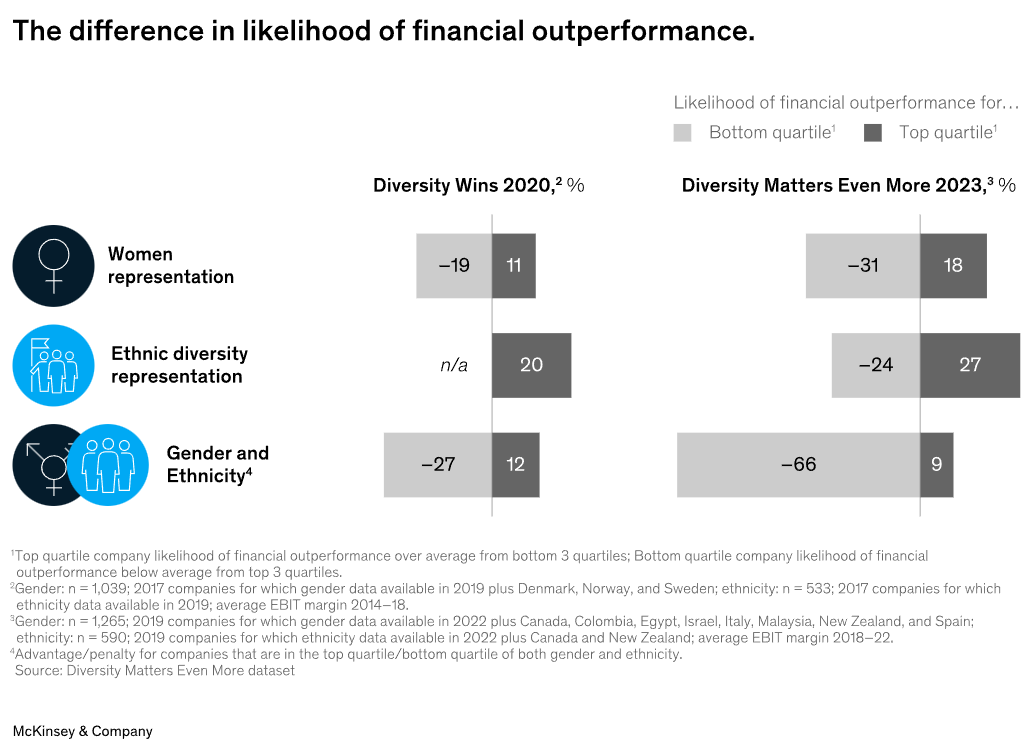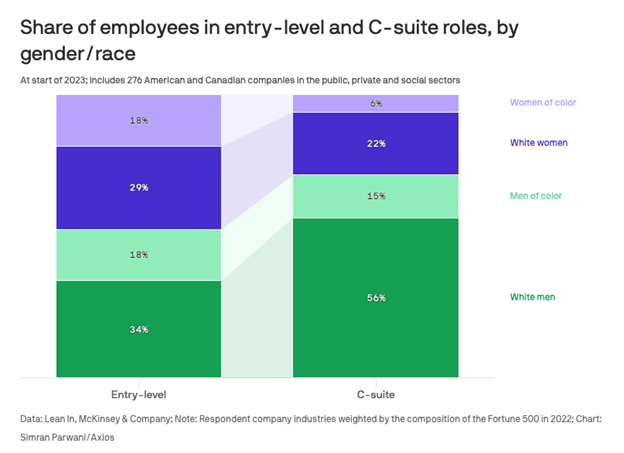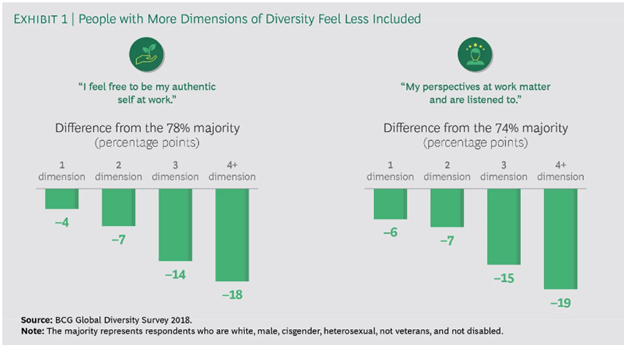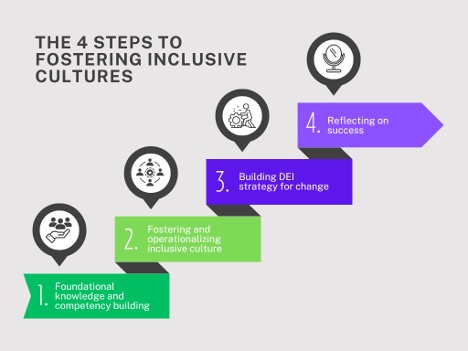Diverse Dynamics

The Appleton Greene Corporate Training Program (CTP) for Diverse Dynamics is provided by Mrs. Mallik Certified Learning Provider (CLP). Program Specifications: Monthly cost USD$2,500.00; Monthly Workshops 6 hours; Monthly Support 4 hours; Program Duration 12 months; Program orders subject to ongoing availability.

Personal Profile
Mrs. Mallik is a seasoned Diversity, Equity, and Inclusion (DEI) strategist, consultant, and coach dedicated to creating workplaces where underrepresented individuals can thrive. With a proven track record of driving systemic change at Amazon, Meta, and Tandem Diabetes Care, she has successfully led large-scale DEI initiatives that embed equity into corporate structures, policies, and leadership practices.
A results-driven leader, Mrs. Mallik specializes in developing and executing DEI strategies that go beyond surface-level commitments, ensuring long-term, measurable impact. She has worked closely with executives and HR leaders to implement inclusive hiring frameworks, build equitable leadership pipelines, and create accountability systems that drive cultural transformation. Her ability to navigate complex organizational dynamics allows her to influence key decision-makers and align DEI efforts with business objectives.
As a coach, Mrs. Mallik approaches her work with compassion, intersectionality, and kindness, empowering underrepresented professionals to advance in their careers while equipping leaders with the tools to foster genuinely inclusive workplaces. She is also the founder of Active Allies, a program designed to move individuals and organizations beyond performative allyship and into sustained, meaningful action.
A sought-after speaker and facilitator, Mrs. Mallik blends research-backed insights with real-world experience to engage audiences in transformative conversations. Whether guiding organizations through high-impact DEI strategies or coaching individuals on career advancement, she remains committed to driving lasting change through education, advocacy, and strategic leadership.
To request further information about Mrs. Mallik through Appleton Greene, please Click Here.
(CLP) Programs
Appleton Greene corporate training programs are all process-driven. They are used as vehicles to implement tangible business processes within clients’ organizations, together with training, support and facilitation during the use of these processes. Corporate training programs are therefore implemented over a sustainable period of time, that is to say, between 1 year (incorporating 12 monthly workshops), and 4 years (incorporating 48 monthly workshops). Your program information guide will specify how long each program takes to complete. Each monthly workshop takes 6 hours to implement and can be undertaken either on the client’s premises, an Appleton Greene serviced office, or online via the internet. This enables clients to implement each part of their business process, before moving onto the next stage of the program and enables employees to plan their study time around their current work commitments. The result is far greater program benefit, over a more sustainable period of time and a significantly improved return on investment.
Appleton Greene uses standard and bespoke corporate training programs as vessels to transfer business process improvement knowledge into the heart of our clients’ organizations. Each individual program focuses upon the implementation of a specific business process, which enables clients to easily quantify their return on investment. There are hundreds of established Appleton Greene corporate training products now available to clients within customer services, e-business, finance, globalization, human resources, information technology, legal, management, marketing and production. It does not matter whether a client’s employees are located within one office, or an unlimited number of international offices, we can still bring them together to learn and implement specific business processes collectively. Our approach to global localization enables us to provide clients with a truly international service with that all important personal touch. Appleton Greene corporate training programs can be provided virtually or locally and they are all unique in that they individually focus upon a specific business function. All (CLP) programs are implemented over a sustainable period of time, usually between 1-4 years, incorporating 12-48 monthly workshops and professional support is consistently provided during this time by qualified learning providers and where appropriate, by Accredited Consultants.
Executive summary
Diverse Dynamics
The individual is always part of a larger collective.
Travel and technological advancements have made the world more connected than before. Teams are no longer made up of people from a single nation or culture who speak the same language, have a similar culture, and view the world from a single perspective.
As individuals bring their diverse life experiences into an organization, businesses must understand that these individuals also bring with them unique challenges in their personal and professional lives, which are brought about by:
● Systemic injustice
● Not being able to access opportunities
● Discrimination
● Stereotypes about their identities
● Obstacles outside of their control
This could be viewed as a challenge or an opportunity for business leaders, depending on who you ask. For companies seeking to innovate, experiment, and grow, this is an opportunity to embrace and celebrate the additional diversity introduced into their organizations. Current corporate systems were developed during an era in which women were primarily employed in domestic roles, segregation remained lawful in the US, LGBTQIA+ individuals continued to face discrimination due to their identity, and people of color were mostly absent from corporate settings.
Even though a lot of the world has made great strides toward including these people, corporate structures, policies, and practices are still not being updated to create fair and inclusive practices that support diversity up to the C-Suite. Why?
We usually do not start the change process within ourselves. Yet, this is the first place we are responsible for. For a change that not only drives business results but also has to do with something as personal as an individual’s identity, being able to empathize with their lived experiences first and then make more people-centric business decisions is not only compassionate; it makes business sense. Organizations that create company cultures that are welcoming and inclusive for diverse employee populations financially outpace their competitors consistently year-over-year, the more representative of the world their employees are.

Source: McKinsey & Co., Diversity Matters Even More: The Case for Holistic Impact, 2023.
Why? Because inclusive and equitable organizations create environments that encourage people to innovate, take calculated risks, fail safely. Individuals are not overly focused or concerned about the identities that they represent and instead focus on the work they are hired to do because they are in a psychologically safe environment. Continuously striving for diversity and inclusivity will ultimately lead to increased creativity, collaboration, and success within an organization.
The organization’s senior leadership intentionally engineers and cultivates these environments; they do not result from accidents. This reality is possible for every organization committed to addressing inequity in their workplace.
While many organizations have made promising systemic changes and policy improvements to create more equitable and inclusive cultures, there is still much work to be done. Women of Color have only been able to secure 6% of C-Suite positions since 2020 and the social justice movements that spurred greater discourse around diversity, equity, and inclusion in global corporations; at that time, Women of Color only represented 4% of the C-Suite.

Source: Axios, Women of Color Face Biggest Gap in C-Suite Representation, 2023.
Additionally, as diversity is more embraced and integrated into organizational cultures, employees with greater levels of diversity report feeling higher levels of isolation and exclusion.

Source: Boston Consulting Group, Amplified Calls for Racial Equity Need Amplified Responses, 2021.
This is not a coincidence or an individual attempting to be difficult. When an organization states that they embrace diversity, they must be skilled in empathy and have a deep understanding of different needs of their employees.
In this one-year program, you will be able to engage in a learning experience that will help you learn about diversity, equity, and inclusion (DEI) from the ground up. We will explore what diversity means beyond the fundamental understanding of race and gender and explore other dimensions of diversity that show up in the workplace every day. We will also discuss the impact of unconscious bias, the power of being an authentic ally, and how you can lead the creation of psychological safety in your workplace—the necessary foundation for any DEI efforts to thrive.
All of the workshops are designed to build upon each other, with the first year focused on individual knowledge and development and transitioning into developing your skillset and strengths as an inclusive leader in year two. You will acquire the skills and knowledge required to promote a more diverse and equitable workplace by taking part in these programs. With this all-encompassing strategy, you will be able to actively support and foster diversity, equity, and inclusion within your company, in addition to cultivating a compassionate leadership style.
Curriculum
Diverse Dynamics – Part 1- Year 1
- Part 1 Month 1 Understanding Diversity
- Part 1 Month 2 Insidious Exclusion
- Part 1 Month 3 Cultural Competency
- Part 1 Month 4 Psychological safety
- Part 1 Month 5 Intersectionality
- Part 1 Month 6 Authentic Allyship
- Part 1 Month 7 Inclusive Leadership
- Part 1 Month 8 Linguistic Inclusion
- Part 1 Month 9 Accessibility
- Part 1 Month 10 Equitable Practices
- Part 1 Month 11 Recruitment & Retention
- Part 1 Month 12 Future Planning
Program Objectives
The following list represents the Key Program Objectives (KPO) for the Appleton Greene Diverse Dynamics corporate training program.
Diverse Dynamics – Part 1- Year 1
- Part 1 Month 1 Understanding Diversity – When many people consider the terms diversity, equity, and inclusion, the initial associations often revolve around race and gender. However, diversity extends far beyond these aspects; we are all more intricate than our race and gender identities. To be effective agents of change in our organizations and communities, it is crucial to cultivate a nuanced understanding of diversity, appreciate how it contributes richness to our communities, and recognize our individual roles in this tapestry. This session will enlighten you on various dimensions of diversity, underscore the significance of diversity in the workplace, and present the business case for fostering diversity within organizations.
- Part 1 Month 2 Insidious Exclusion – Contrary to common belief, unconscious biases form early in our lives as a mechanism for our brains to rapidly process the multitude of information inputs received each day and derive quick meaning from them. However, biases stemming from these mental shortcuts are significantly shaped by our environments and can result in unintentionally exclusionary behaviors if left unchecked over time. In this session, we will delve into the prevalent types of unconscious biases many of us harbor and explore how they play out in individual and organizational behavior. Additionally, we will explore strategies to counteract these biases and discuss proactive, constructive approaches to interrupt bias within our organizations when observed.
- Part 1 Month 3 Cultural Competency – Developing cultural competency is akin to building any other knowledge base within your skill set. In our increasingly globalized world, it is crucial for everyone to be well-versed in the cultural norms, standards, values, practices, and traditions of diverse communities. Cultivating cultural competency enables us to exercise empathy, connect more seamlessly with others, and discover common ground amid differences. This session will explore how you can leverage cultural differences to bridge gaps between diverse groups and foster community. Additionally, it will guide you on utilizing cultural knowledge for effective cross-cultural communication.
- Part 1 Month 4 Psychological safety – You may have encountered the term “psychological safety” as it gained popularity, particularly since 2020, but you might be uncertain about its exact meaning. Nevertheless, it serves as a critical foundation for individuals to feel secure when contributing, speaking up, challenging, and taking risks within a team or organization. In this session, we will delve into the four stages of psychological safety developed by Dr. Timothy Clark, exploring the significance of each stage and providing guidance on how to establish them. Additionally, we will discuss how you can seamlessly integrate the establishment of psychological safety into your regular leadership practice and style.
- Part 1 Month 5 Intersectionality – A critical yet often overlooked topic in diversity, equity, and inclusion is intersectionality. Intersectionality posits that all forms of oppression are interconnected, and individuals have unique experiences of discrimination and oppression based on various dimensions of diversity they identify with. For someone unfamiliar with or infrequently exposed to intersectionality, it can seem like an intimidating concept to explore. In this session, we will navigate the concept of intersectionality together because understanding it is crucial to becoming an effective and authentic ally. By the end of this session, you will be able to recognize how different dimensions of diversity can give rise to distinct challenges for various groups of individuals based on their unique intersectionality. We will also discuss diverse approaches to being an effective ally to different groups based on their intersectionalities.
- Part 1 Month 6 Authentic Allyship – At the core of any successful diversity, equity, and inclusion initiative or function lies the presence of authentic allies. Following the 2020 social reckoning that sparked global social justice conversations, a crucial discourse unfolded: the difference between performative allyship and authentic allyship. In this session, we will delve into the distinction between performative and authentic allyship. Participants will gain insights into engaging in thoughtful and genuine behaviors that actively support and amplify underrepresented and marginalized populations within any organization or community setting they aim to advocate for. You will learn how to lead in allyship, regardless of your formal title in an organization. Finally, we will discuss strategies for repairing mistakes and how to resume authentic allyship rather than abandoning the practice when setbacks occur.
- Part 1 Month 7 Inclusive Leadership – In any organization or community, inclusive leadership is non-negotiable for the effectiveness of diversity, equity, and inclusion initiatives. Embracing an inclusive leadership style fosters psychological safety within teams, unlocks innovation, and typically demands leaders invest in their upskilling and education. This session will delve into the essence of inclusive leadership, guiding participants on how to cultivate an inclusive team culture. The goal is to create a team environment that serves as a space of belonging and psychological safety for all its members. You will walk away from this session with new tools in your leadership toolbox for fostering psychological and authenticity within your teams.
- Part 1 Month 8 Linguistic Inclusion – In an increasingly virtual world, language serves as the foundation of all our relationships. It follows that our language should be inherently inclusive, especially as our globalized world brings us into contact with people from diverse cultures. There has been significant discourse, particularly within the tech industry, addressing the inclusivity of language within code, focusing on terms like “master” and “slave,” and discussing ways to continually enhance language for greater inclusivity. In this session, we will delve into best practices for inclusive language, writing for a global English-speaking audience, exploring effective communication with empathy, and ensuring that our intent aligns with the impact in our communication.
- Part 1 Month 9 Accessibility – An often overlooked but crucial aspect of diversity, equity, and inclusion involves considerations for accessibility within the workplace, communities, and beyond. The needs for assistive technology, accessible websites, and workplace accommodations are not always well understood. However, it is essential to familiarize ourselves with these considerations to create a more welcoming workplace for people with disabilities. In this session, we will explore common types of disabilities that require workplace accommodations, different guiding legislation and laws that must be followed, how to be allies and supporters of people with disabilities in the workplace, and ways to enhance accessibility in our day-to-day activities.
- Part 1 Month 10 Equitable Practices – One of the primary areas where systemic inequities persist is within the policies and practices of organizations. This can encompass aspects like Human Resources, cultural norms, team protocols, and more. As your organization or team undergoes growth and your organization becomes increasingly diverse, it becomes crucial to critically examine existing processes and assess their inclusivity and equity. Building upon our previous learning, we will discuss best practices for fostering equity in policies and practices across organizations. Additionally, we will explore how to identify and address any inequities that are discovered, ensuring effective communication within the organization or team to manage change successfully.
- Part 1 Month 11 Recruitment & Retention – When contemplating diversity, equity, and inclusion, the initial focus often centers on recruiting more diverse employees. However, the crucial question extends beyond recruitment—it should be about setting up these individuals for greater success and ensuring their desire to stay. This session will explore diversity, equity, and inclusion through an employee life cycle lens. We will delve into creating a culture of inclusion within an organization where employees feel valued, respected, and a sense of belonging, fostering an environment that encourages long-term commitment. By the end of this session, you will gain a clear understanding of authentic, inclusive recruiting practices and retention strategies for building and sustaining a diverse and inclusive workforce over time.
- Part 1 Month 12 Future Planning – Similar to any other practice, diversity, equity, and inclusion, as well as authentic allyship, inclusive leadership, psychological safety, inclusive recruiting and retention strategies, and beyond, will not always be executed perfectly. Diversity, equity, and inclusion are never intended to be a pursuit of perfection; instead, they are centered around a growth mindset and the concept of continuous improvement. In this session, we will underscore the importance of maintaining a growth mindset throughout your journey with diversity, equity, and inclusion on both individual and leadership levels. Additionally, we will collaboratively build a next steps plan, empowering you to advance as a diversity, equity, and inclusion champion within your organizations.
Methodology
Diverse Dynamics
This program is designed for Senior Leadership (Executive, Director), Managers, Human Resource leaders, Diversity, Equity, and Inclusion (DEI) practitioners, and other contributors within organizations who are responsible for the development and health of the company culture. Any organization above an employee population size of 100 will benefit from this training program.

Months 1-5 will be spent building foundational diversity, equity, and inclusion competencies and knowledge related to understanding dimensions of diversity in depth, the impact of unconscious bias, understanding micro and macro ways that exclusion manifests, the criticality of building cultural competency, and psychological safety. We focus initially on these subject areas because, in order to establish an organizational culture that thrives on diversity, leaders and other decision-makers within organizations must operate from a strong foundation of knowledge and deep understanding of equity and inclusion.
All of these subjects will prepare participants to begin developing a mission and vision statement related to their Diversity, Equity, and Inclusion (DEI) aspirations for their organization.
At this point, participants will be equipped with the foundational knowledge they will need to start understanding more nuanced topics related to more advanced, organizational DEI topics that will ensure their continued progress in integrating DEI into their cultural practices. Months 6-7 will be spent focused on this advanced skill-building, focused on topics related to operational and culture-fostering: operating from a place of allyship and continuous learning, and the importance of cultivating an inclusive leadership mindset.
By the end of this stage of the program, participants will be able to chart out an initial, strategic DEI mission and vision for their organization that is rooted in both organizational principles as well as authentic allyship practices.
This will be the longest and most complex stage of the program. From months 8-11, we will actively collaborate with one another to create a robust DEI approach that will successfully launch DEI functions and practices in your organization. In addition to practical hands-on development that is customized to your organization, we will continue to deepen your subject knowledge by addressing critical topics, including:
● Linguistic inclusion and updating technical practices
● Accessibility
● Creating equitable and inclusive policies and practices
● Recruitment and retention of underrepresented groups
This subject matter, along with continuing to build actionable plans, will continue to drive your organizational progress forward.
The final month of the program will be focused on creating metrics to measure success and being able to understand if your diversity, equity, and inclusion (DEI) efforts are effective. If they are, we will explore ways to continue that momentum, and if they are struggling to lift off, we’ll explore ways to generate greater inertia.
Industries
This service is primarily available to the following industry sectors:
Technology
The tech industry has undergone a remarkable evolution since its start, marked by groundbreaking innovations and transformative developments. Beginning with the advent of the personal computer in the late 20th century, pioneers like IBM, Microsoft, and Apple laid the foundation for the digital revolution. The emergence of the internet in the 1990s paved the way for unprecedented connectivity and the rise of tech giants such as Google, Amazon, and Facebook. The 21st century witnessed the proliferation of smartphones, cloud computing, artificial intelligence, and other disruptive technologies, reshaping industries and revolutionizing how we live, work, and interact.
Today, the tech industry stands at the forefront of global innovation, driving economic growth and societal change. The industry, which includes well-known companies like Apple, Alphabet, Microsoft, Amazon, and Facebook (now Meta), continues to grow across a variety of industries, including e-commerce, entertainment, healthcare, and transportation. Startups and unicorns, fueled by venture capital investments, are disrupting traditional business models and challenging established players. However, concerns over data privacy, cybersecurity, monopolistic practices, and the ethical implications of emerging technologies cast shadows over the industry’s progress.
Future advancements in artificial intelligence, quantum computing, blockchain, and biotechnology will propel the tech sector’s evolution and disruption. These technologies hold the potential to revolutionize industries, create new markets, and address pressing global challenges, from climate change to healthcare accessibility. However, navigating regulatory landscapes, fostering responsible innovation, and addressing socio-economic inequalities will be crucial for ensuring the industry’s sustainable growth and positive impact. Collaboration between governments, industry stakeholders, and civil society will be essential in shaping a future where technology serves humanity’s collective interests while mitigating risks and promoting inclusivity.
Consumer Goods
The production and distribution of goods for personal consumption characterize the consumer goods industry, which has a long history. From the early days of craftsmanship and local markets to the Industrial Revolution’s mass production and globalization, consumer goods have played a central role in meeting human needs and desires. Iconic brands such as Coca-Cola, Procter & Gamble, and Unilever emerged during the 19th and 20th centuries, shaping consumer preferences and market dynamics. The advent of digital technologies and e-commerce in the late 20th century revolutionized how consumer goods are marketed, sold, and consumed, ushering in an era of unprecedented convenience and choice.
In today’s landscape, the consumer goods industry is characterized by fierce competition, rapid innovation, and quickly evolving consumer preferences. Globalization has led to the expansion of multinational corporations, driving consolidation and strategic partnerships across the supply chain. Traditional brick-and-mortar retailers face increasing pressure from e-commerce giants like Amazon and Alibaba, who leverage data analytics and artificial intelligence to personalize customer experiences and optimize operations. Sustainability and ethical sourcing have become top priorities for consumers, leading companies to adopt environmentally friendly practices and transparent supply chains. Additionally, the COVID-19 pandemic accelerated digital transformation trends, fueling the growth of online shopping and reshaping consumer behaviors.
Future technological advancements, changing demographics, and shifting consumer expectations will likely lead to further disruption and innovation in the consumer goods sector. Personalization and customization will become increasingly prevalent as companies harness data analytics and AI to offer tailored products and experiences. The rise of direct-to-consumer (DTC) brands and subscription-based models will challenge traditional distribution channels, enabling brands to forge deeper connections with customers and capture market share. Sustainability will continue to be a key differentiator, with consumers demanding eco-friendly products and transparent business practices. Moreover, advancements in 3D printing, robotics, and augmented reality promise to revolutionize manufacturing processes and enhance product innovation. Collaboration across the industry and with stakeholders will be essential in navigating these changes and ensuring a future where consumer goods meet both economic and societal needs.
Education
Education has been a cornerstone of human civilization, evolving over millennia to meet the needs of societies and individuals. From ancient civilizations’ oral traditions and apprenticeship systems to the establishment of formal schooling during the Renaissance and Industrial Revolution, education has played a vital role in transmitting knowledge, values, and skills across generations. The 20th century witnessed the expansion of public education systems worldwide, driven by efforts to promote literacy, equality, and economic development. Technological advancements, such as the printing press, radio, television, and the internet, have revolutionized educational practices, making learning more accessible and interactive.
Globalization, digitalization, and socioeconomic changes have had a significant and rapid impact on education in the modern world. Traditional educational models are being challenged by online learning platforms, adaptive technologies, and alternative forms of credentialing. EdTech startups and established players like Coursera, Khan Academy, and Udacity are democratizing access to education, offering a wide range of courses and resources to learners worldwide. Blended learning approaches, combining in-person instruction with online components, are gaining popularity in schools and universities, fostering personalized learning experiences and flexibility. However, disparities in access to quality education persist, exacerbating inequalities along socio-economic, geographic, and demographic lines.
Looking ahead, the future of education holds both promise and complexity, driven by technological innovation, societal needs, and educational research. Artificial intelligence, virtual reality, and gamification are poised to revolutionize teaching and learning, enabling personalized instruction, immersive experiences, and real-time feedback. Competency-based education and lifelong learning initiatives will become increasingly important as the pace of technological change accelerates, necessitating continuous skill development and adaptation. Additionally, the COVID-19 pandemic has catalyzed experimentation with remote and hybrid learning models, prompting educators and policymakers to rethink traditional educational paradigms and embrace innovative approaches. Collaboration between stakeholders, including governments, educators, industry leaders, and communities, will be essential in shaping an inclusive, adaptable, and future-ready education system that equips learners with the knowledge, skills, and values to thrive in a rapidly evolving world.
Retail
Retail has a long, documented history dating back to ancient civilizations, where bartering and marketplace exchanges were common forms of trade. The concept evolved with the establishment of permanent market stalls and bazaars in medieval towns, facilitating the exchange of goods and services. The Industrial Revolution marked a significant shift in retail, with the emergence of department stores, mail-order catalogs, and mass production techniques. The 20th century witnessed the rise of modern retail formats, including supermarkets, convenience stores, and shopping malls, catering to the growing consumer demand for convenience, choice, and experience. The advent of e-commerce in the late 20th century transformed retail once again, enabling online shopping and reshaping consumer behavior and market dynamics.
In the contemporary landscape, the retail industry is undergoing a period of rapid evolution and disruption, driven by technological innovation, changing consumer preferences, and market dynamics. Brick-and-mortar retailers face intense competition from e-commerce giants like Amazon, Alibaba, and eBay, who leverage data analytics, artificial intelligence, and logistics infrastructure to offer easy shopping experiences and fast delivery. Omnichannel retailing has become increasingly prevalent, blurring the lines between online and offline shopping as retailers integrate digital and physical channels to meet consumer expectations. Also, the COVID-19 pandemic accelerated digital transformation trends, leading to a surge in online shopping and the adoption of contactless payment and delivery options.
Looking ahead, consumer behavior changes, sustainability imperatives, and technological advancements will all influence the retail industry. Virtual reality and artificial intelligence will enhance the retail experience, enabling immersive shopping experiences, personalized recommendations, and virtual try-on capabilities. Sustainability and ethical sourcing will become key differentiators for retailers, as consumers demand transparency and eco-friendly products. The rise of direct-to-consumer (DTC) brands and social commerce platforms will challenge traditional retail models, enabling brands to forge direct relationships with consumers and capture market share. Moreover, innovations in last-mile delivery, such as drones and autonomous vehicles, will revolutionize logistics and fulfillment, offering faster and more efficient delivery options. Collaboration between retailers, technology providers, and policymakers will be essential in navigating these changes and ensuring a vibrant retail ecosystem that meets the needs of consumers.
Healthcare
The history of healthcare has always been focused on understanding, treating, and preventing illness and disease. From ancient healing practices and herbal remedies to the establishment of formal medical systems in civilizations such as ancient Egypt, Greece, and China, healthcare has been an essential aspect of human society. The Renaissance and the Enlightenment periods marked significant advancements in medical knowledge, anatomy, and scientific inquiry, laying the foundation for modern medicine. The 20th century witnessed groundbreaking discoveries in vaccines, antibiotics, and surgical techniques, revolutionizing healthcare and extending the human lifespan. The establishment of universal healthcare systems in many countries further expanded access to medical services, promoting public health and well-being.
Technological advancement, demographic changes, and socioeconomic factors are all driving significant change in the healthcare industry today. The rise of digital health technologies, including electronic health records, telemedicine, and wearable devices, is revolutionizing patient care, enabling remote monitoring, personalized medicine, and data-driven decision-making. Additionally, advancements in genomics, precision medicine, and regenerative therapies provide hope for more targeted and effective treatments for various diseases and conditions. However, healthcare systems face challenges such as rising costs, disparities in access to care, and an aging population burdening healthcare infrastructure and resources.
Many factors, such as technological advancement, regulatory reforms, and shifting societal expectations, will influence the future of healthcare. Artificial intelligence and machine learning will play an increasingly prominent role in healthcare, assisting in diagnosis, treatment planning, and drug discovery. The integration of genomics and digital health data will enable personalized and preventive approaches to healthcare, tailoring interventions to individual genetic profiles and lifestyle factors. Telemedicine and remote patient monitoring will continue to expand access to care, particularly in underserved areas and during public health crises. The COVID-19 pandemic has accelerated the adoption of digital health solutions and highlighted the importance of resilient and adaptable healthcare systems. Collaboration between stakeholders, including healthcare providers, technology companies, policymakers, and patients, will be essential in navigating these changes and ensuring that healthcare remains accessible, affordable, and patient-centered in the years to come.
Locations
This service is primarily available within the following locations:
Seattle – United States of America
Land acknowledgment: We acknowledge that the city of Seattle and its greenspaces are on stolen Coast Salish land, specifically the ancestral land of the Duwamish, Suquamish, Stillaguamish, and Muckleshoot People. We recognize the stewardship of Seattle’s greenspaces by the Coast Salish people since time immemorial, the disruption of this work by colonization, and now endeavor to continue this work.
Seattle is located on a small plot of land between the Puget Sound and Lake Washington. First settled by white settlers in the mid-1800’s, Seattle has historically and until this century, relied heavily on the logging, maritime, and railway industries due to its abundance in forested land and proximity to natural waterways. It has always been a popular transportation hub for the transfer of importing and exporting goods with it’s strategic location and close proximity to Canada, Hawaii, Japan, and many other important locations for commerce.
In the past ten years, Seattle has continued to develop as a notable tech hub on a global scale. With the presence of tech giants such as Microsoft and Amazon having started here well over two decades ago, Seattle has made a concerted effort to create an environment that is friendly to established and start-up tech companies alike. As a result, the city has become a bustling hub for new and innovative technology from well-known companies such as Google and Meta, which began to establish a strong presence over 10 years ago.
The city of Seattle is one of the most populous cities on the West Coast of the United States, with the Greater Seattle Area having a population size of 3.5 million as of 2022.
The Seattle Metropolitan Area has continued to evolve to now include the founding of other globally massive organizations such as Starbucks, Microsoft, Amazon, and Expedia, which have fundamentally shifted our world through technical innovation and retail. The life sciences, healthcare research, and construction industries are quickly emerging as key industries in the area. The University of Washington, Fred Hutch Cancer Center, and The Allen Institute of Bioscience are all located in Seattle and well regarded in different areas of life science for making significant strides in different areas of life sciences. Within the construction industry, companies in the Seattle area specialize in construction of roadways, residential, and commercial construction. There are challenges with diversifying this industry, with 80% currently identifying as male and 73% identifying as white. However, there have been intentional efforts to diversify this industry in the past decade.
The area has continued to thrive, both historically and currently, in the aerospace and maritime industries. Due to Seattle’s proximity to the Pacific Ocean and long history with transcontinental and interstate rail system commerce, Seattle has established itself as a critical transportation point for goods to reach their final destinations.
Seattle’s reputation as a technology powerhouse is set to strengthen further, with the city continuing to attract top talent and investment. The convergence of artificial intelligence, machine learning, and big data analytics will drive innovation across sectors, from cloud computing to biotechnology. Companies will increasingly focus on sustainability, cybersecurity, and ethical AI, positioning Seattle as a global leader in responsible tech development.
Additionally, the aerospace industry, anchored by industry giants like Boeing and Blue Origin, will undergo a period of rapid transformation. Advancements in electric propulsion, autonomous flight systems, and space tourism will shape the future of aviation. Sustainable aviation fuels and carbon-neutral operations will become paramount, reflecting the industry’s commitment to environmental stewardship.
Leading organizations like the Fred Hutchinson Cancer Research Center and the University of Washington School of Medicine will support the robust healthcare ecosystem, which will lead to ground-breaking advancements in personalized medicine, genomics, and digital health. Telemedicine and remote patient monitoring will become mainstream, enhancing access to healthcare services and improving patient outcomes.
The region’s commitment to sustainability will drive innovation in renewable energy and clean technology. The city’s access to hydroelectric power and its embrace of solar and wind energy will accelerate the transition towards a carbon-neutral economy. Smart grid technologies, energy storage solutions, and electric vehicle infrastructure will play pivotal roles in shaping Seattle’s sustainable energy future.
Lastly, Seattle’s retail landscape will continue to evolve in response to changing consumer behaviors and technological disruptions. E-commerce platforms will leverage augmented reality and virtual reality to enhance the online shopping experience, while brick-and-mortar retailers will prioritize experiential offerings and omnichannel strategies. Sustainability and ethical sourcing will drive consumer purchasing decisions, reshaping the retail industry’s supply chains.
San Francisco – United States of America
Land Acknowledgement: The City of San Francisco acknowledges that we are on the unceded ancestral homeland of the Ramaytush (rah-mytoosh) Ohlone (O-lon-ee) who are the original inhabitants of the San Francisco Peninsula. As the Indigenous stewards of this land, and in accordance with their traditions, the Ramaytush Ohlone have never ceded, lost, nor forgotten their responsibilities as the caretakers of this place, as well as for all peoples who reside in their traditional territory. As guests, we recognize that we benefit from living and working on their traditional homeland. We wish to pay our respects by acknowledging the Ancestors, Elders, and Relatives of the Ramaytush Ohlone community and by affirming their sovereign rights as First Peoples.
San Francisco has long been known for its international business prowess as well as its cultural diversity. Positioned on the coast of Northern California, San Francisco has thrived as a city of multiple industries, partially due to its geographical location. With a strong history and thriving industry to railway, natural material processing, and being a popular transportation hub to transit goods around the world and cross-country, San Francisco has a long history of traditional commerce.
However, San Francisco is more well-known for its formidable presence in the technology industry with the Silicon Valley that sits just south of the city. With the establishment of Apple in the Bay Area in the 1970s, San Francisco was put on the map early as a center of technical innovation and quickly magnetized to attract similar organizations seeking to technically innovate as well. Other companies soon followed suit, with Meta, Alphabet, Cisco, Visa, and other Fortune 500 organizations finding a home there. In the past 10 years, these companies have continued to maintain a strong presence within the region, attracting top talent into the region.
San Francisco is renowned for its cultural acceptance of marginalized people and its status as a central location for the LGBTQIA+ community. Harvey Milk, a prominent figure in the LGBTQIA+ community, was from San Francisco. He served as a member of the San Francisco Board of Supervisors and achieved the distinction of being the first openly gay male to be elected to a public office in both California and the United States. During this period, San Francisco became a prominent industrial center, particularly with the rise of the Silicon Valley region located to the south of the city. This development greatly influenced the way we communicate in our modern society. From the 1970s forward, companies such as Google, Apple, and Meta were established and had significant growth, exerting a substantial influence on society.
Currently, the city and its surrounding area serve as hubs for numerous influential industries, including technology, social media, life sciences, and international business. As venture capital investment in these critical industries among early-stage startups continues to increase, it will further influence the development of the region. The region will undergo more diversification since 59% of the population in the nine-county Bay Area identifies as individuals belonging to racial or ethnic minority groups.
The present population of the San Francisco Bay region is 7 million, and it is expected to increase by 2.1 million individuals by the year 2040. Additionally, there will be a projected expansion of 1.1 million job opportunities in the same time frame. The San Francisco Bay Area encompasses nine counties that encircle the city of San Francisco. It is home to significant technological and economic hubs, such as Silicon Valley, located to the south of San Francisco.
The San Francisco Bay Area is on track to continue growing both in population and industry in the next 15 years. While the pandemic had an impact on the population, with many people leaving the area to seek a lower cost of living with the average home price around $1.76. million USD, many companies compelling some form of in-office presence are prompting a gradual population rise. In the next 5 years, we should expect to see a revitalization of the area, with a particular emphasis on leisure services such as restaurants, bars, hotels, and tourism. Industries such as technology and social media, life sciences and international business will continue to keep a strong foothold in the area due to the presence of historically large and influential businesses such as Apple, Meta, and Alphabet showing no indication of shifting their presence to any other location soon and being highly reliant upon the talent in the locality and compelling much of their talent to return to the area through return to office mandates.
Portland – United States of America
Land acknowledgment: The Portland Metro area rests on traditional village sites of the Multnomah, Wasco, Cowlitz, Kathlamet, Clackamas, Bands of Chinook, Tualatin, Kalapuya, Molalla, and many other tribes who made their homes along the Columbia River. Indigenous people have created communities and summer encampments to harvest and enjoy the plentiful natural resources of the area for the last 11,000 years.
We want to recognize that Portland today is a community of many diverse Native peoples who continue to live and work here. We respectfully acknowledge and honor all Indigenous communities—past, present, future—and are grateful for their ongoing and vibrant presence.
We also acknowledge the systemic policies of genocide, relocation, and assimilation that still impact many Indigenous and Native American families today. As settlers and guests on these lands, we respect the work of Indigenous leaders and families and pledge to make ongoing efforts to recognize their knowledge, creativity, and resilience.
Located three hours south of Seattle, Portland shares a similar industrial history to its neighboring city. Due to its proximity to the Columbia River, it quickly became a city of trade and commerce, and with the establishment of the Transcontinental Railroad, a major transportation hub for the import and export of goods both within the country and for international trade.
In addition to being a major shipping and transportation center by land, Portland began to develop a strong maritime industry following World War II with the influx of skilled shipbuilders who entered the city to support the war effort. Much like Seattle, Portland has a strong history of maritime industry and shipping as a result, hosting international maritime trade as a common practice.
Portland, a rapidly growing city in the Pacific Northwest region of the United States, currently hosts a population size of approximately 648,000 people.
Today, Portland has transformed into a city of high-technology and industry. Due to the rising cost of real estate in the Silicon Valley of the San Francisco Bay Area, many technology startups began to move up north in search of greater affordability in commercial and residential real estate costs. This spurred the creation of what is now known as the Silicon Forest, which has attracted different types of companies, including software development, computer services, computer production, computer equipment, and more.
Much like its northern neighbor, Seattle, Portland is well known for its maritime trade activities, with deepwater ports capable of holding large, transcontinental ocean vessels. Additionally, Portland has maintained a strong industrial presence, with manufacturing enterprises around packaging, aerospace equipment, metals/machinery, and food processing.
Additionally, many people may be unfamiliar with the fact that Portland is home to some of the largest sporting and outdoor apparel manufacturers in the world. Nike, Columbia Sportswear, Adidas, and La Crosse Footwear all plant their global headquarters in the Portland area, making it a central location for thousands of employment opportunities for those interested in the outdoor and recreational industries.
The future outlook for Portland is bright. There are no signs of slowing growth as the city continues to be a talent magnet due to a more reasonable cost of living, abundant employment opportunities, and giant retailers such as Nike and Adidas continuing to maintain their global headquarters in the locality. Additionally, longstanding industries such as maritime, transportation, and new industries like those brought through the Silicon Forest will continue to grow throughout the region. With the availability of an international airport within the city itself, a growing international talent pool, and proximity to both the San Francisco Bay Area and Seattle, Portland is an ideal location for companies looking to establish a foothold on the West Coast at a reasonable cost point.
New York City – United States of America
Land acknowledgment: The New York City Commission on Human Rights (“Commission”) acknowledges the land politically designated as New York City to be the homeland of the Lenape (Lenapehoking) who were violently displaced as a result of European settler colonialism over the course of 400 years.
As one of the largest cities in the world largest city in the United States, New York City stands out as a powerhouse of industry and commerce. Throughout its long history since the establishment of the city in 1614, the city has undergone many transformations of industry, but in the past ten years, it has carved a unique space in the international business community as a global economic center. The city has become particularly well known for the financial industry with the presence of Wall Street, international politics with the presence of the United Nations headquarters, and it’s status as a cultural hub for fashion and art, rivaling cities such as Paris.
New York City is the most populous city in the United States, with a population of 8.3 million as of 2022 and 18.3 million residents in the Greater New York City metropolitan area. The city is on track to exceed 9 million residents by 2040. New York is renowned for its prominence in technology, media, life sciences, fashion, and finance, attracting numerous individuals to call it their home.
45 out of the top 500 Fortune 500 companies chose to locate their headquarters in the New York City area, demonstrating the significance of the financial and tech sectors there. Additionally, the city boasts a substantial concentration of international talent, with over 300,000 employees in the financial services sector and 200 angel investors and venture capitalists operating in the region.
The city’s tech industry has had sustained growth, with a total of 291,000 jobs and $124.7 billion in economic activity. As of 2014, this industry has secured more than $4.5 billion in venture capital funding and has shown a job growth rate of 18% over the preceding ten years.
The New York City area has among the largest bioscience workforces in the United States, according to a Battelle study. There have also been $1.5 billion dollars worth of National Institutes of Health awards granted to New York City for research, the second most to any city in the country. Additionally, the city has amongst the highest concentration of leading academic research institutions such as New York University, Albert Einstein College of Medicine, and The Rockefeller University, among others.
New York is the epicenter of fashion within the United States and is considered a fashion hub globally, with more fashion designers and retailers than any other city in the United States. There are an estimated 180,000 or 6% of the city’s workforce in New York’s fashion industry, generating $10.9 billion in total wages. The city is home to an estimated 900 fashion headquarters 75 major fashion tradeshows and thousands of fashion showrooms.
In addition to the home to the iconic Wall Street, New York is a formidable city for financial trade and capital. With 45 out of 500 Fortune 500 companies headquartered in New York City, the city has deep wells of capital, a diverse range of international talent and a strong financial base. There are over 300,000 financial service workers and over 200 angel investors and venture capitalists. Additionally, the city plays host of a strong regulatory and legal environment.
The city is also one of the most diverse cities in the world, with over 200 languages spoken within the city, 37% of the city residents being born outside of the United States, and as many as 49% of residents speaking a language other than English at home. This environment is an ideal setting for international businesses to thrive with intentionally created cultures.
New York has a strong foothold in a diverse range of industries, spanning financial services, international business, media, technology, and bioscience. Over the next 15 years, New York is on track to only increase in population size and grow an increased talent pool. However, by 2030, the New York Department of Labor anticipates the performing arts industry to make a significant return to the area, with over 159% growth in performing arts, 139% increase in arts and recreation, and 131% increase in museum-based industry. Additionally, technology will continue to expand its reach into the area, availing itself of the diverse pool of international talent in the area, with a projected increase of 44% by 2030.
Los Angeles – United States of America
Land acknowledgment: – The County of Los Angeles recognizes that we occupy land originally and still inhabited and cared for by the Tongva, Tataviam, Serrano, Kizh, and Chumash Peoples. We honor and pay respect to their elders and descendants — past, present, and emerging — as they continue their stewardship of these lands and waters. We acknowledge that settler colonization resulted in land seizure, disease, subjugation, slavery, relocation, broken promises, genocide, and multigenerational trauma. This acknowledgment demonstrates our responsibility and commitment to truth, healing, and reconciliation and to elevating the stories, culture, and community of the original inhabitants of Los Angeles County. We are grateful to have the opportunity to live and work on these ancestral lands. We are dedicated to growing and sustaining relationships with Native peoples and local tribal governments, including (in no particular order) the:
● Fernandeño Tataviam Band of Mission Indians
● Gabrielino Tongva Indians of California Tribal Council
● Gabrieleno/Tongva San Gabriel Band of Mission Indians
● Gabrieleño Band of Mission Indians – Kizh Nation
● San Manuel Band of Mission Indians
● San Fernando Band of Mission Indians
Los Angeles has undergone a major transformation from it’s origins. Starting as a rough-and-tumble frontier town riddled with ethnic conflicts in the early 1860’s, the city is now known for its tourism, film, music, and commerce industry.
Unlike many of the other major cities on the West Coast, Los Angeles faced the challenges of lacking a natural waterway when first founded. This limited the type of industry that could initally be established, so the city was first home to rancheros. Once a reliable waterway was established along with the introduction of a Southern Pacific Railroad, Los Angeles established the city’s first industry, which still stands strong today: tourism. The city was able to advertise itself as a less-costly, warm alternative to European vacations for wealthy East Coast Americans.
Over time, the city continued to grow in size and prosperity, growing in notoriety through strategic marketing, and becoming a well-known tourist destination due to its sunny weather, mild temperatures, expanded commerce, and growing film industry. In World War II, the city grew even more prosperous, becoming a major manufacturing center for aircraft production. At the same time, the introduction of motion film technology was introduced, which drew artists, creatives, and actors to the city, establishing a thriving film industry over multiple decades that still stands today.
The current population of Los Angeles is 3.8 million and the greater Los Angeles Area is 12.5 million people. Due to the variety of industries and location along the Southern California coast, Los Angeles has attracted a diverse population and boasts one of the most diverse city populations in the country. 49% of the population identifies as Hispanic or Latine, 200 languages are spoken, and 33.5% of the population is foreign-born. This diversity is only second to New York City and fosters a blending of cultural traditions, innovation, and faiths.
Today, Los Angeles is known for its thriving entertainment, tourist, bioscience, and fashion industries. Home to global entertainment giants such as Disney, Fox, Paramount, Sony, NBC Universal, and Warner Bros., Los Angeles is the epicenter of the entertainment world. In addition to the formidable entertainment industry, Los Angeles is home to premier bioscience research institutions, hosted within world-class institutions such as UCLA Medical Center and Cedars-Sinai Hospital, among others. There is critical ongoing medical research in the region, including concerted efforts to find a cure for HIV and develop drug pumps, among other scientific advancements.
In the fashion industry, Los Angeles is arguably on the best cities for apparel design, textile selection, jewelry, and footwear. Over recent years, it has been drawing increased attention for the underrepresented fashion designers who are represented within the city’s fashion industry, often reflecting their cultural heritage into mainstream fashion.
The future outlook for the commercial industries of Los Angeles continues to be promising. According to the Los Angeles County Economic Development Corporation (LACEDC), the aforementioned industries of bioscience, entertainment, fashion, and tourism will continue to thrive. Additionally, there is an increasing demand for growth in the ocean or “blue economy” which is anticipated to double over the next decade. This emerging industry will call for an increased investment in sustainable development in the workforce and industries to address climate change, pollution, and overfishing. Given Los Angeles’ proximity and reliance on waterways for trade, creating sustainable ways to rely on the ocean for transportation will be vital for the long-term viability of the area’s maritime trade.
The region is also on track to continue making substantial strides in international trade and business, thus trade and logistics will become a greater priority as well. Investments in sea ports, rail, air freight, and working with foreign subsidiaries for additional direct investment to increase international trade in the area will become of increasing importance in the area.
Program Benefits
Human Resources
- Diverse perspectives
- Inclusive recruiting
- Employee retention
- Inclusive culture
- Workplace harmony
- Skill development
- Fair representation
- Training effectiveness
- Leadership diversity
- Legal compliance
Marketing
- Market expansion
- Brand loyalty
- Authenticity appeal
- Customer engagement
- Reputation enhancement
- Cultural relevance
- Competitive edge
- Customer trust
- Innovation catalyst
- Brand appeal
Management
- Efficiency boost
- Talent retention
- Enhanced productivity
- Strategic alignment
- Decision clarity
- Leadership development
- Employee satisfaction
- Risk mitigation
- Cost optimization
- Organizational agility
Testimonials
Beckman Coulter Diagnostics
“I had the privilege of working with Mrs. Mallik in the realm of diversity, equity, and inclusion. Their unwavering commitment to fostering a diverse and inclusive workplace is truly commendable. Mrs. Mallik is not only a strategic thinker but also a compassionate advocate, consistently driving positive change. The energy Mrs. Mallik brings to the DEI space is unmatched. Mrs. Mallik embodies empathy, open communication, and a genuine passion for creating an environment where everyone feels valued. I wholeheartedly recommend Mrs. Mallik in anything she seeks to pursue as she will always be successful. ”
Tandem Diabetes Care
“I had the privilege of working with Mrs. Mallik when she was at Tandem Diabetes Care. Mrs. Mallik is a highly experienced DEI practitioner with excellence in communication, relationship and community building, and a deep understanding of how to navigate corporate culture to get the job done. When she started at Tandem there was no DEI programming and there were no inclusion communities. Most of us didn’t know much about either. Mrs. Mallik showed us how to build. She has a special way of bringing people along in the organic creation of community and building of bridges within a complex organization – giving people autonomy and power while simultaneously holding firm in her vision of what is needed. Her sense of necessary urgency is refreshing and bold. Overall I cannot say enough about the impact that Mrs. Mallik had on me, as an individual, as a leader, and on the organization. I miss you already!”
Amazon
“Mrs. Mallik is a powerhouse who I’ve had the pleasure of getting to know during her time at Amazon. Mrs. Mallik’s leadership, determination, and strength were on full display while working to remove noninclusive terms from the workplace. The mission of the noninclusive tech initiative was both personal and professional for Mrs. Mallik because she genuinely wants her children to grow up in a much better world than that of which we live in today. Mrs. Mallik is a natural born leader whose warm yet firm nature commanded the respect of all on the call. I value her contributions to the many discussions we’ve had about the topic of inclusion, especially in Tech, as it pertains to traditionally underserved minority populations. Mrs. Mallik understands how important it is that we continue to learn from one another. My only regret is that we didn’t have more time to work together on this initiative and perhaps even develop some spinoffs of our very own. I hope to have the opportunity to work with Mrs. Mallik again in the near future.”
Amazon
“Working alongside Mrs. Mallik in a nuanced and complex inclusive language in tech project, I could always count on Mrs. Mallik to bring forward thoughtful and deeply-researched insights. And, most importantly, to push against the status quo or complacency that could lead to an inability to make tough decisions. These are essential traits in a DEI leader – nuanced, thoughtful, researched, backbone – and Mrs. Mallik displayed those in her work.”
Amazon
“At Amazon, I had the great opportunity to collaborate with Mrs. Mallik on several critical projects and to get to know her personally. Mrs. Mallik’s optimistic leadership style was infectious, she excels at nimble thinking and problem solving. Mrs. Mallik was my “go to” resident expert on virtual learning and complex technical training programs and her leadership, expertise, and sense of humor were invaluable to quickly resolve challenging issues. Mrs. Mallik is a thoughtful and strategic leader, with a comprehensive view of the organization and her inclusive thinking and exceptional passion for diversity initiatives at Amazon allowed her to identify gaps and work across organizational boundaries providing solutions and achieving success.”
More detailed achievements, references and testimonials are confidentially available to clients upon request.
Client Telephone Conference (CTC)
If you have any questions or if you would like to arrange a Client Telephone Conference (CTC) to discuss this particular Unique Consulting Service Proposition (UCSP) in more detail, please CLICK HERE.



























